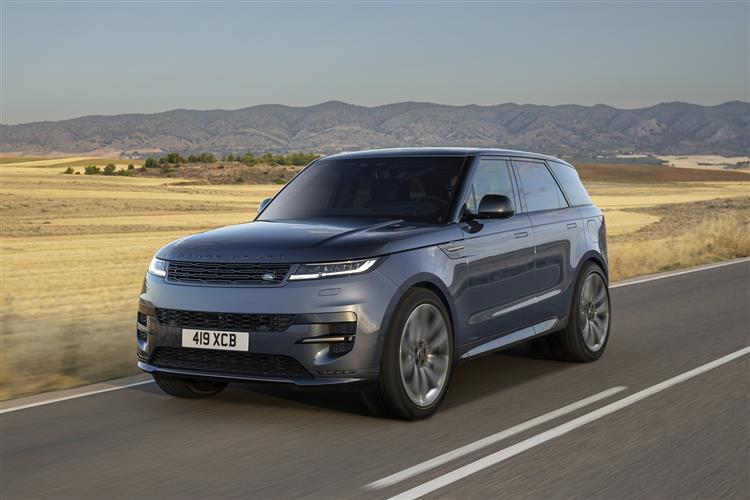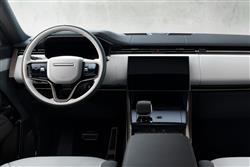A GREENER KIND OF SPORT (some text hidden) --NONE--
By Jonathan Crouch
The third generation Range Rover Sport improves its PHEV technology. Jonathan Crouch takes a look at the P460e.
Ten Second Reviewword count: 52
The Range Rover Sport now makes more sense than it used to in Plug-in Hybrid form. This P460e version could now be used on battery power for general suburban trips on a regular basis - which could be all the incentive you need to consider one. There's still nothing quite like it.
Backgroundword count: 110
Traditionally, the Range Rover Sport has sold primarily with a diesel engine. For the time being, it still does but Land Rover is getting more serious in its attempts to switch DERV customers to Plug-in Hybrid petrol power. Most were unconvinced by the very first Range Rover Sport PHEV, based on the second generation model, which had four cylinder engine and a battery that wasn't really big enough. But this L461-era Range Rover Sport PHEV is a very different proposition. There's now enough range to allow you to use it for suburban journeys almost like an EV. And the six cylinder engine feels much more fitting for a Range Rover.
Driving Experienceword count: 295
The Range Rover Sport Plug-in Hybrid offering was well worth avoiding with the previous generation car but now offers a more sensible alternative to DERV - and perhaps also to the full-EV version, which hadn't yet been launched at the time of this test. That's mainly because the PHEV engine now has six rather than four cylinders and there's a vastly larger 38.2kWh battery. To give you some perspective, that's bigger than the battery fitted in some small full-EVs (!) and of course it enormously improves this car's EV range (quoted at 73.3 miles - think 50 in the real world). As usual with Land Rovers, the model names designate horsepower. The main 3.0-litre PHEV unit (which we tried and liked last month in a Range Rover) is badged 'P460e' and makes 62mph in 5.5s en route to 140mph. With plush spec, there's also a fractionally faster P550e version of the same unit. Whichever variant you choose, it should feel sharper to drive than the original PHEV model thanks to a body structure now 35% stiffer than before, offering what Land Rover claims is 'sportscar levels of stiffness'. Plus the dual chamber air suspension has been designed to limit cornering body roll - and pitch under acceleration. An optional 'Stormer' handling pack adds 'Dynamic Response Pro anti-roll control', plus rear wheel steering, torque vectoring by braking and 'Adaptive Dynamics' adaptive damping with Bilstein monotube dampers. As before, the Range Rover Sport is unrivalled off road, with intelligently variable all-wheel drive and 'Terrain Response' with six settings. The air springs can offer a 135mm ride height increase, water up to 900mm deep can be forwarded and 45-degree gradients attempted. The vulnerable PHEV battery does limit it a bit in extremis compared to the conventionally-engined versions though.
To see the full road test text contact us on 0330 0020 227
Pictures (high res disabled)

.jpg)
|
.jpg)
|
.jpg)
| |||
.jpg)
|
.jpg)
|
.jpg)
| |||
.jpg)
|

|
Statistics (subset of data only)
Min |
Max |
|
Price: |
£90,200.00 (At 8 Nov 2024) |
£104,720.00 (At 8 Nov 2024) |
CO2 (g/km): |
17 |
|
Max Speed (mph): |
140 |
|
0-62 mph (s): |
5.3 |
|
Electric WLTP-Rated Driving Range (miles): |
73 |
|
Combined Mpg: |
382.4 |
|
Length (mm): |
4946 |
|
Width (mm): |
2209 |
|
Height (mm): |
1820 |
|
Boot Capacity (l): |
835 |
|
Scoring (subset of scores)
Category: Hybrid, Plug-in, Electric & Hydrogen
| Performance | |
| Handling | |
| Comfort | |
| Space | |
| Styling, Build, Value, Equipment, Depreciation, Handling, Insurance and Total scores are available with our full data feed. | |



